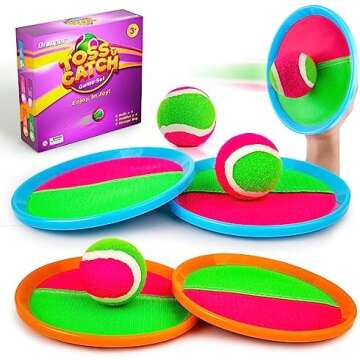A Comprehensive Guide to Buying Scooters for Children
Scooters have become a staple in many children's outdoor activities , offering both fun and a mode of transport that promotes physical activity. Whether you're buying a scooter for a toddler or a more experienced young rider, there are several factors to consider to ensure you choose the best option. In this guide, we’ll cover everything you need to know about buying scooters for children. 🛴
Understanding the Basics of Scooters for Kids
Before diving into the features and specifics, it's crucial to understand the different types of scooters available for children. Scooters generally fall into several categories based on their design and intended use:
- Kick Scooters : These are the classic scooters that most people are familiar with. They have two wheels and are propelled by kicking off the ground. They are perfect for kids who enjoy scooting around the neighborhood or local park.
- Three-Wheel Scooters : Designed for younger children, these scooters provide extra stability with their two front wheels and one rear wheel. They are great for beginners who are still mastering their balance.
- Electric Scooters : For older children and teenagers, electric scooters offer a bit more excitement. They run on a motor and can reach higher speeds than manual scooters. However, they also require more responsibility and safety precautions.
- Stunt Scooters : These are for the more adventurous kids who want to perform tricks and stunts. They are built to withstand jumps and flips, with a more robust construction compared to regular scooters.
Each type of scooter caters to different age groups and skill levels. Understanding these categories helps in making an informed decision based on your child's needs and abilities.
Safety First: What to Look for in a Child's Scooter
When buying a scooter for a child, safety should be the top priority. Here are some essential safety features to consider:
- Sturdy Construction : The frame of the scooter should be durable enough to handle the weight of your child and any rough handling. Look for scooters made from high-quality materials like aluminum or reinforced plastic.
- Brakes : Most scooters come with a rear fender brake that is activated by stepping on it. Some advanced models have hand brakes. Ensure the braking system is easy for your child to use and responsive enough to stop quickly when needed.
- Wheels : The size and material of the wheels can affect the ride quality and safety. Larger wheels tend to provide a smoother ride and can handle bumps better. Wheels made from polyurethane or rubber are more durable and provide better traction.
- Grip Tape : The deck of the scooter should have a non-slip surface to prevent your child's feet from slipping off while riding. This is especially important for younger children who may have less control.
- Handlebar Adjustability : An adjustable handlebar ensures that the scooter can grow with your child. It should be easy to adjust and lock securely at the desired height.
- Weight Capacity : Check the maximum weight capacity of the scooter to ensure it is appropriate for your child. This will ensure the safety and longevity of use.
- Protective Gear : While not a part of the scooter itself, encouraging the use of helmets, knee pads, and elbow pads is crucial for your child's safety. Make sure to invest in good quality protective gear.
By paying attention to these safety features, you can help prevent accidents and injuries, ensuring a fun and safe experience for your child.
Size Matters: Choosing the Right Scooter Size
Scooters come in various sizes to accommodate different ages and heights. Selecting the right size is key to your child's comfort and safety. Here’s how to determine the appropriate size:
- Deck Size : The deck is the part of the scooter where your child stands. It should be wide enough to comfortably fit both feet. For younger children, a wider deck can provide more stability, while older kids might prefer a narrower deck for more maneuverability.
- Handlebar Height : The handlebar height should ideally reach your child's waist. Adjustable handlebars are a great feature because they can be tailored to your child's height and allow the scooter to grow with them.
- Wheel Size : Smaller wheels are generally better for younger children and those new to scooting, as they offer more stability. Larger wheels are suited for older children and those looking for a smoother, faster ride.
- Overall Weight : The weight of the scooter should be manageable for your child. If it's too heavy, they might struggle to control it, making riding less enjoyable and potentially more dangerous.
Measuring your child's height and considering their level of coordination can help you choose a scooter that fits them well, making their riding experience more enjoyable.
Durability and Build Quality: What to Expect
When investing in a scooter, you want to ensure it will last and withstand the wear and tear of regular use. Here’s what to look for to gauge a scooter's durability and build quality:
- Material : Scooters are typically made from aluminum, steel, or plastic. Aluminum scooters are lightweight and rust-resistant, making them a popular choice. Steel scooters are heavier but more durable. Plastic scooters are light and often suitable for very young children.
- Construction : Pay attention to the overall construction of the scooter. Check for any loose parts or signs of poor assembly. A well-built scooter will feel solid and have securely fastened components.
- Welds and Joints : For metal scooters, inspect the welds and joints. They should be smooth and free of any cracks or gaps. Poorly welded joints can be a weak point and prone to breaking.
- Wheels and Bearings : High-quality wheels and bearings are crucial for a smooth ride. Look for scooters with durable wheels and sealed bearings that keep dirt and moisture out, prolonging the scooter's lifespan.
- Foldability : Many scooters come with a foldable design for easy storage and transport. Ensure the folding mechanism is sturdy and doesn't compromise the scooter's stability.
Investing in a scooter with good build quality means it can handle the rough and tumble of active play and last longer, providing more value for your money.

Performance and Ride Quality: What to Consider
The performance and ride quality of a scooter can significantly affect your child's enjoyment. Here are some factors to consider:
- Speed and Control : For kick scooters, the speed is controlled by how fast your child kicks. For electric scooters, check the top speed and ensure it is suitable for your child's age and experience level. The scooter should also offer good control and maneuverability.
- Suspension System : Some scooters come with suspension systems to absorb shocks from rough surfaces. This can make the ride smoother and more comfortable, especially if your child will be riding on uneven terrain.
- Wheel Type and Size : The type and size of the wheels can impact the ride quality. Larger wheels tend to roll over obstacles more easily, while smaller wheels are better for smooth surfaces. Pneumatic (air-filled) tires offer better shock absorption compared to solid tires.
- Deck Height : A lower deck height can make the scooter more stable and easier to ride, especially for younger children. However, a higher deck might be necessary for scooters with larger wheels.
- Grip and Comfort : The handlebars should have comfortable grips that are easy for your child to hold onto. The deck should provide a good grip to keep your child's feet securely in place.
Evaluating these performance aspects will help you choose a scooter that not only meets your child’s needs but also enhances their riding experience.
Age and Skill Level: Matching the Scooter to Your Child
Children’s abilities and needs change as they grow, and so should the type of scooter they use. Here’s how to match a scooter to your child's age and skill level:
- Toddlers (Ages 2-5) : For the youngest riders, stability and safety are paramount. Look for three-wheel scooters that provide balance and are easy to steer. They should have a low deck and be lightweight for easy handling.
- Young Children (Ages 5-8) : As children grow, they develop better balance and coordination. Two-wheel kick scooters are usually appropriate at this stage. Look for models with adjustable handlebars and a sturdy frame.
- Older Children (Ages 8-12) : Older children are often more adventurous and may enjoy faster rides or performing tricks. Stunt scooters or electric scooters with moderate speeds can be suitable for this age group. Ensure they understand the importance of safety and wearing protective gear.
- Teenagers : Teenagers often look for more speed and style. They might prefer advanced kick scooters, higher-speed electric scooters, or stunt scooters for performing tricks. Choose scooters that can handle higher weights and are built for more rigorous use.
Considering your child's age and skill level ensures that the scooter is appropriate for their current capabilities and provides room for growth.
Budget and Value: Making the Right Investment
Scooters come in a wide range of prices, and setting a budget can help narrow down your choices. Here’s how to approach budgeting for a scooter:
- Determine Your Budget : Decide on a budget range before you start shopping. This will help you filter out options that are outside your price range and focus on finding the best scooter within your budget.
- Evaluate Features : More expensive scooters often come with additional features such as better build quality, suspension systems, or advanced braking systems. Determine which features are most important for your child and see how they fit into your budget.
- Consider Long-Term Use : Investing in a higher-quality scooter might be more cost-effective in the long run. Durable scooters that grow with your child or have a longer lifespan can provide better value than cheaper options that might need replacing sooner.
- Compare Prices : Once you have a shortlist of scooters that meet your criteria, compare prices from different retailers. Look for sales, discounts, or bundle offers that can provide more value for your money.
Balancing your budget with the desired features and quality ensures that you make a smart investment that your child will enjoy for a long time.
Where to Buy: Finding Reliable Sources
Finding the right place to buy a scooter is just as important as choosing the scooter itself. Here are some tips on where to shop:
- Online Retailers : Shopping online offers the convenience of browsing a wide range of options from the comfort of your home. Websites like Effortless Mobility at giftpals.com provide a variety of scooters with detailed descriptions and customer reviews to help you make an informed choice.
- Specialty Stores : Visiting a store that specializes in children's outdoor toys or scooters allows you to see the products in person and get expert advice. You can test different models to find the best fit for your child.
- Department Stores : Many department stores have sections dedicated to children's toys and outdoor activities. These stores often carry popular scooter brands and offer seasonal sales.
- Local Shops : Supporting local businesses can be a great way to find unique or specialty scooters. Local shops might also offer personalized service and maintenance options.
- Secondhand Options : For those on a tighter budget, considering gently used scooters from secondhand stores or online marketplaces can be a good option. Just ensure the scooter is in good condition and meets all safety standards.
By choosing reputable sources, you can ensure that you are buying a quality product and that you have support if any issues arise.
Conclusion
Buying a scooter for your child can be a rewarding experience that opens up a world of fun and adventure. By understanding the different types of scooters, focusing on safety features, choosing the right size, and considering your child's age and skill level, you can find the perfect scooter that meets their needs and your budget. Remember, whether you're looking for a simple kick scooter or something more advanced, Effortless Mobility at giftpals.com has a range of options to explore. 🚀
































































































































































































































































































































































































































































































































































































 Continue with Google
Continue with Google